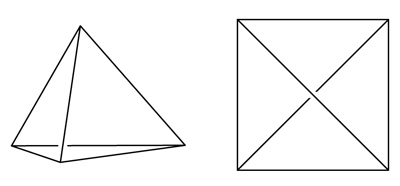We’ll have some pursuit puzzles over the next couple of weeks; this segment’s puzzle has a simple and elegant solution, but it might take a while to work it out!
In the meanwhile, here’s a little discussion about the glass of water problem.
Each time we add or subtract 50%, we are multiplying the quantity of water by 1/2 or 3/2. If we began with 1 glass’ worth, at each stage, we’ll have a quantity of the form 3m/2n with m,n>0 Of course that can never equal 1, but we can get very close if m/n is very close to log3 2 = 0.63092975357145743710…
Unfortunately, there’s a serious problem: m/n has to hit the mark pretty closely in order for 3m/2n to get really close to 1, and to get within “one molecule”s worth, m and n have to be huge indeed.
How huge? Well, let’s see: an 8 oz. glass of water contains about 1025 molecules; to get within 1/1025 of 1, we need m=31150961018190238869556, n=49373105075258054570781 !! One immediate problem is that if you make a switch about 100,000 times a second, this takes about as long as the universe is old!
But there’s a more serious issue.
In a glass of water, there’s a real, specific number of molecules. Each time we add or subtract 50%, we are knocking out a factor of 2 from this number. Once we’re out of factors of 2, we can’t truly play the game any more, because we’d have to be taking fractions of water molecules. (For example, if we begin with, say, 100 molecules, after just two steps we’d be out of 2’s since 100=2*2*some other stuff.
But even though there are a huge number of water molecules in a glass of water, even if we arrange it so that there are as many 2’s as possible in that number, there just can’t be that many: 283 is about as good as we can do (of course, we won’t have precisely 8 ounces any more, but still.)
If we are only allowed 83 or so steps, the best we can do is only m= 53, n = 84 (Let’s just make the glass twice as big to accommodate that), and, as Byon noted, 3^53/2^84 is about 1.0021– not that close, really!


 mathbun.com
mathbun.com